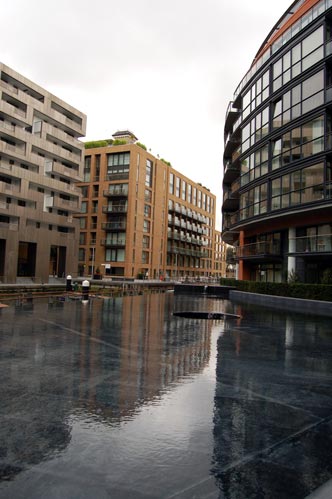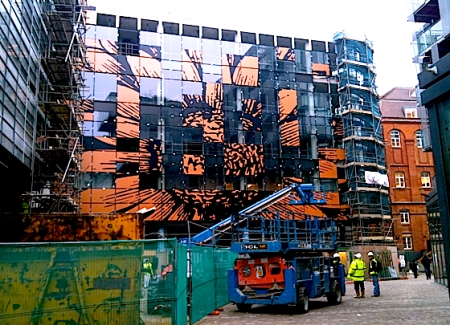On Tuesday 15th February our sister gallery, Chelsea Futurespace, is celebrating its fifth anniversary with a special private view of new sculpture by Richard Slatter.
You are invited to this special Private View Today: 6-8.30pm Chelsea Futurespace, Hepworth Court, Grosvenor Waterside, Gatliff Road (off Ebury Bridge Road), London, SW1W 8QP.The show is curated by artist and CHELSEA space Research Fellow Barbara Elting and she has designed and edited a new colour publication to accompany the show with texts by herself and artist Susan Forsyth plus a forward by John Nicholl and photographs by Mike Iveson.
In 2005 CHELSEA space Director Donald Smith was approached by Mark Davy of Futurecity Arts consultants to come up with a proposal for an exhibiting space within the Grosvenor Waterside development and Donald’s idea was for a showcase space for alumni and staff of Chelsea College of Art and Design to enable a partial history of Chelsea artists to emerge. Chelsea Futurespace became part of the cultural strategy for the site, owned by property developers St James Urban Living, and constituted part of the Section 106 Planning Application to Westminster Council (approved). Other parts of the cultural strategy included a permanent work by Richard Wilson, a water sculpture by Chelsea alumnus Ekkehard Altenberger, and buildings by MAKE architects with an etched metal facade by artist Clare Woods.
Richard Wilson’s Shack Stack at Grosvenor Waterside is his first permanent work in London and is a very interesting piece of art in the ‘public realm’; it is a monumental aluminium cast of a stack of three allotment sheds which appear to have dropped, meteor-like, into the plush architectural setting of the Grosvenor Waterside Development. The aluminium cast is highly detailed and very intimately shows the Do It Yourself ‘make-do’ culture of British gardening enthusiasts – a stark contrast to the architectural precision and power of the construction industry and the glossy facades of property development. The aluminium finish of Wilson’s piece makes it a kind of Trojan Horse, assimilating the slick finish of the surrounding buildings but alluding to another culture entirely.
The problem for property developers and local councils when creating new residential developments is how to create a place to which people will want to come and that serves the bigger community in the proximity of the development – a place for the many and not just the elite few who can afford to buy appartments. Cultural Placemaking is a skill and Futurecity and its Director, Mark Davy, are at the top of their game; CHELSEA space have had a very constructive partnership working with Futurecity and Chelsea Futurespace has proved a useful adjunct to our programme and activities. Chelsea Futurespace has allowed us to showcase artists and tell something of the story of an art school, and it has allowed us to test the possibilities of creating a credible exhibiting space within an unlikely situation. In return, particularly in the early days of the development, we have brought public audiences (people!) to the site and have helped to put a new address firmly on the map and in the public conciousness.
Happy 5th anniversary to Chelsea Futurespace! Thanks and congratulations to all the artists who have exhibited there and a special thanks to Futurecity and St James Urban Living who have sponsored this project.














